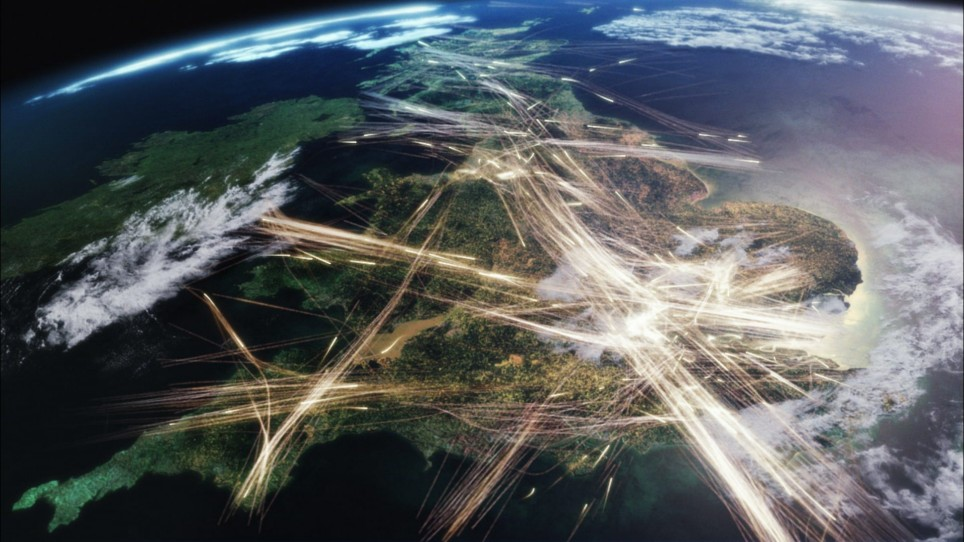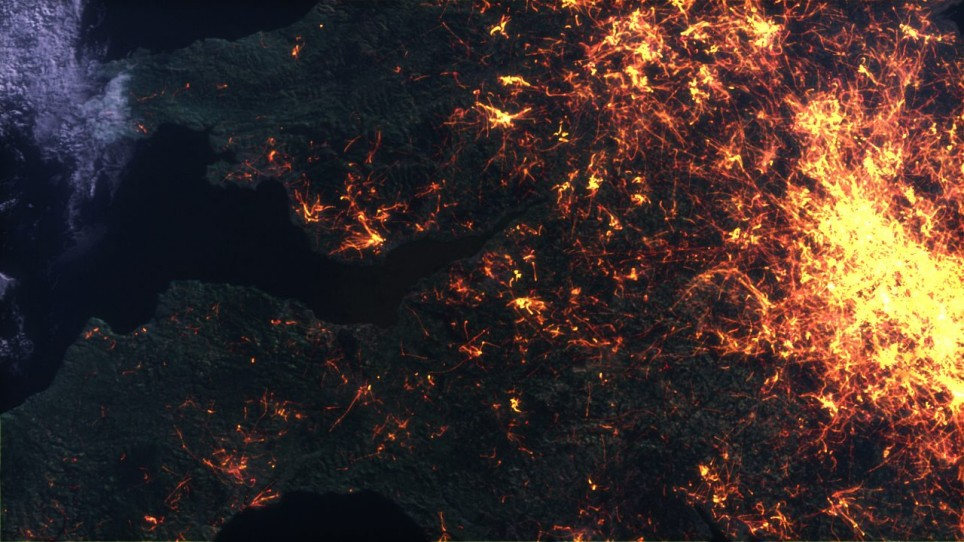


Pervasive and Invisible
The satellite is an essentially invisible technology that pervades, invades, and allows our day to day lives as embodied in the above satellite images of aircraft, internet, and telephone activity over part of the UK. All of these things, and the existence of the global community, or global village is dependent on satellites. Satellite uses are varied, and include communication, surveillance, weather, military/defense, astronomical, navigational, and human inhabited space stations. Only a select number of countries have the resources to put a large number of satellites into orbit, including the United States, Russia, the European Space Agency, China, and a few other countries that have made only a handful of launches. The resources we allocate to create satellites (materials, time, money, energy) are far reaching, as are the global implications of satellite use and the politics of controlling the “final frontier.”
Communication
The satellite has enabled the rapid advancement of a myriad number of communication methods and systems ranging from internet, to television, to the telephone. Communication can happen between any points in the world (given the right equipment), and it can happen just about instantly through satellite relay. It will have an increasingly important, yet still invisible role as cell phones with features such as GPS and internet access grow in popularity, and companies such as Grameenphone http://www.grameenphone.com/, for instance, distribute cell phones world wide in developing nations. A history of communication satellite launches and their effects on creating a “global village” can be found here: http://www.hq.nasa.gov/office/pao/History/satcomhistory.html.
Man and Satellite
Satellite technology is both pervasive and concealed. This idea operates on the simple level wherein the design or purpose of many satellites is unknown (military or spy or in a competitive business) and yet when one looks up into the night sky they are everywhere, continually doing something or other, be it relaying information or collecting data. On a far more interesting and complex level, we lack direct contact with satellites yet heavily rely on them for things such as cell phones, GPS, mapping, television, radio, and so on. I chose the above (satellite) images to discuss this idea of the invisible and pervasive, and these images say more than any numbers could. Air traffic, internet, and telephone activity are all now largely tied into satellites. Air traffic in terms of GPS mapping, analysis of flight plans, locations of other planes, weather, and so on and so on. Internet and phone is mediated at some level by the satellite when it becomes global communication. We’re entirely dependent on this invisible technology for the way of life we have created for ourselves and grown accustomed to. This relationship is the ultimate example of the “Cyborg” where “man with thing” is inherently different than “man without thing.” Access to satellite technology, be it through the medium of an iPhone, GPS, government computer with rocket launching capabilities, or oil company mapping software used for underground natural resource speculation, creates a completely different person. Satellites, although between 80 and 22,000 miles above us, dictate how societies or individuals function, and have changed who we fundamentally are. As for the question of have we made it or has it made us, the answer is certainly the latter. This idea is perhaps best evidenced in the satellite tracking of people (http://www.stopllc.com/en/cms/?40).
The Satellite main page
